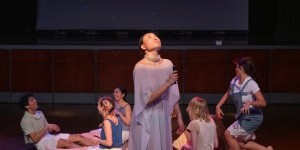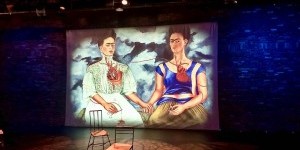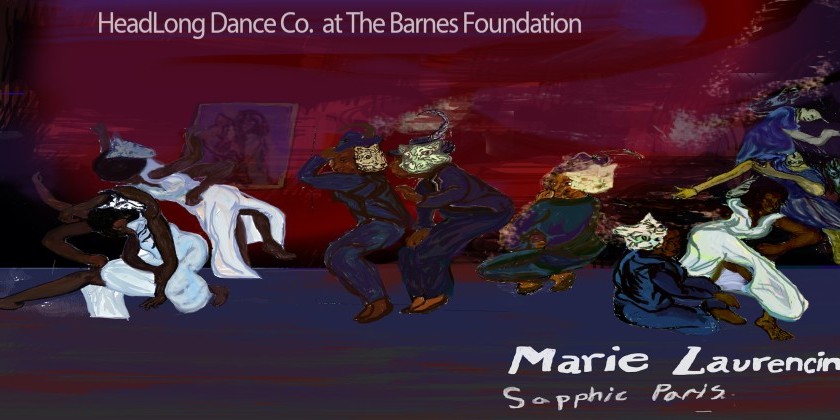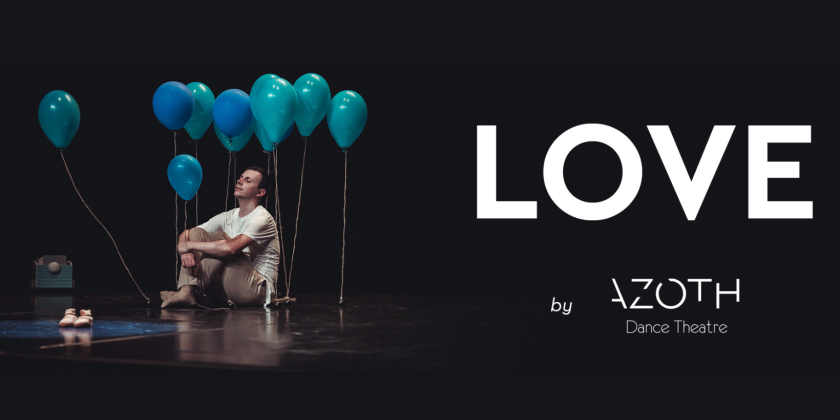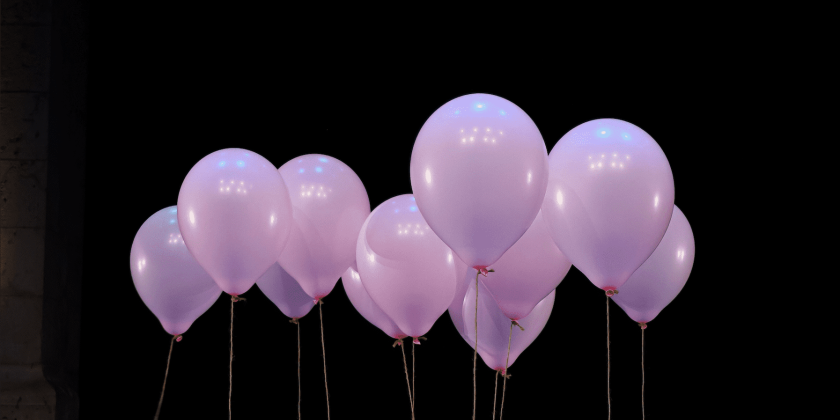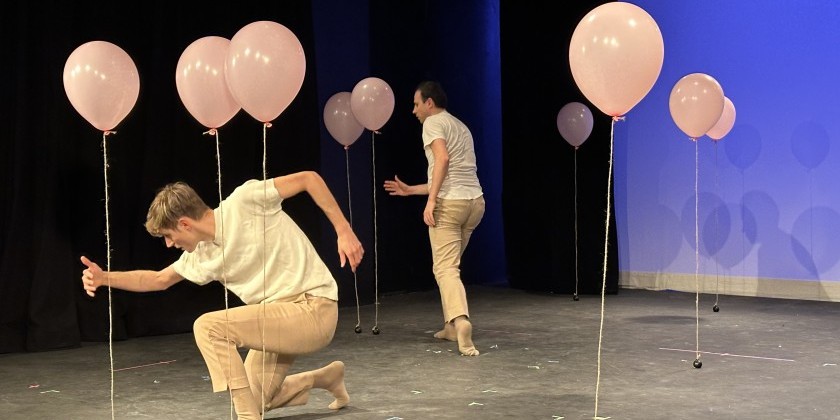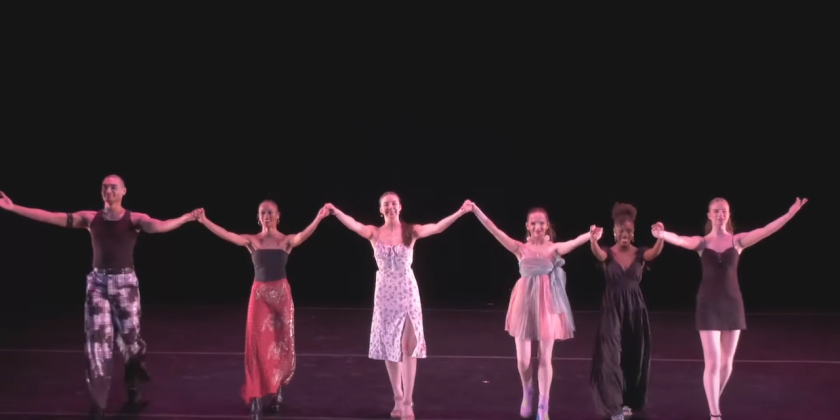AUDIENCE REVIEW: A rare spirit of community at 7MPR
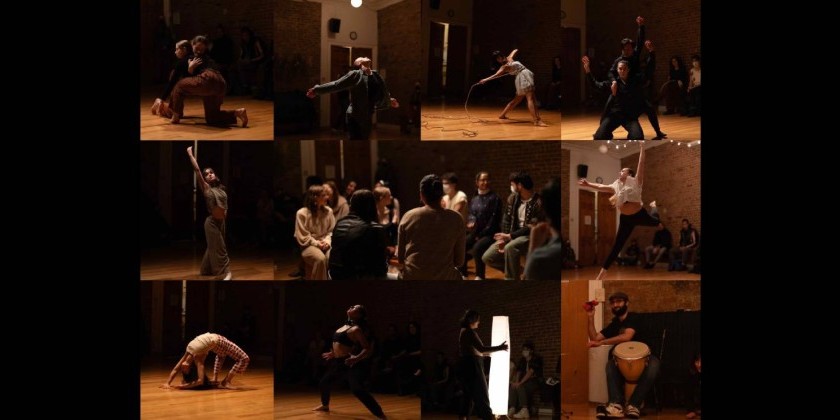
Company:
7 Midnights Physical Research
Performance Date:
Sunday, January 7, 2024
Freeform Review:
7MPR Themed Dance Theater - Midnights Performance Series
Jiali Wang, founder and artistic director of 7 Midnights Physical Research (7MPR) has created a unique performance platform for emerging artists. 7MPR is committed to presenting dances that explore one or more of seven sociological topics: class, education, ability, sexuality, race, age, and gender. This premise has enlivened a particularly supportive and open-minded community wherein, on January 7th, emerging artists experimented with audience collaboration, technology, and raw emotional vulnerability.
This Sixth Midnight performance, the first of 2024, included nine distinct dances, plus opening and closing dances by Wang. In their opening dance, Wang’s quality was swirling and stirring, moving separately and almost in defiance of the simultaneous voiceover that welcomed the audience to the space, provided practical details (like where to find 7MPR on Instagram) and thematically grounded the evening in the sociological mission of the platform.
Unceremoniously, this introductory dance ended and Bailey Fleming’s “Opaque” began. Floating, free gestures that suddenly stopped short, and a flighty, hesitant movement quality were accompanied by melancholy piano and string music. As the sound increased in intensity, Fleming’s gestures became more particular and distorted. Her movements would approach freedom and flow, but stop short–the music desirous and yearning, the dance bound and abrupt. Fleming’s internal experience–the impetus for her truncated quality–was, in fact, opaque to me, but her emotional storytelling was clear and gripping; perhaps this was intended.
“To My Former Lover, Just Three Rows Away” created by Chloe Kastner (Chloe Kastner Dance Company) and danced by Emma Iredale left me with more questions about storytelling and earnest vulnerability. Iredale began dancing to a recorded text about falling in love, and her movements mirrored the text’s emphasis on particular word choice: surrender, control, falling. The dance was quick and athletic, with an urgency that reminded me of the exciting panic of becoming close to somebody. A second voiceover told the painful story of an ex lover’s death, and the work ended abruptly and unhappily. The quality of subdued frenzy Iredale brought to Kastner’s choreography resembled, to me, the emotional “pangs” that often accompany love.
Mattie McGarey entered the space for her work “Shifted” with a pair of black headphones, her face faintly lit by the screen of an iPod. She pressed “play,” and in the audience, we could almost make out the sounds of rock music. With big, low movement and an upward gaze, McGarey seemed to be preparing for something. I realized, at some point, that the music had shifted to something of a heroic, noble tone, and later, there was a transit announcement, house music, and robotic noises… all electronically generated sound.
McGarey’s swift floorwork, swirling and grounded flow, and periods of soft muttering gave me the sense that she was in her own world, where everything was more intense. When the work reached its peak, McGarey, upside down on the floor, removed the headphones with a foot, escaping the technology and the alternate world she created.
Natalie Long’s (ERELONG) “Learn You” was a tonal shift from McGarey’s technologically-informed internal exploration to an intimate and emotionally charged duet. Crawling, sliding, embracing in contorted shapes, and repeatedly moving away and towards one another, Long and performer/collaborator Ellery Jernigan’s relationship was complex and dynamic. They were intertwined and collaborative in their partnering. Within their intimacy, I sensed fear, curiosity, and above all, a desire to know the other. “Learn You” was brief, but resonant and rich.
The first four dances of the evening were beautifully intense, and Maggie Golder’s friendly introduction was also a delightful shift. While setting up her technological prop–a tall paper lantern–she said hello, and explained that throughout her dance entitled “Light Switch,” she would be instructing us to open and close our eyes. Because these instructions were improvised, the dance we witnessed was unique to us, and to that day.
Circling the light with sweeping, casually rigorous movement, Golder gave us instructions and turned the lantern on and off, all while moving in and out of the floor. When the light flickered on, her interaction with it felt to me like a soft, “Ah, there you are,” as if greeting a close friend or lover. When she touched it, it responded by crinkling gently. Despite the title and premise of the work, I was deeply tuned into sounds: breathing, floor squeaking, running, the lantern’s fragile paper. One moment, we opened our eyes to Golder upside down balancing on one shoulder, another, we met her in a deep and precarious hinge. Athleticism and rigor met care, joy, and quiet vulnerability in “Light Switch.” When Golder exited the floor, she let out a breathy, “that was fun.”
After intermission, “Icecream” by Jessica Marchand maintained this lighthearted essence, if in a slightly more eerie and idiosyncratic fashion. Performer Andrea Villarreal meandered throughout the space with a plush dog on a leash–spinning around so that it nearly hit some audience members (but didn’t), affectionately speaking to it, and gently cuddling it. Grooving to the sound, she seemed to be aware of the audience, but indifferent about being watched, enjoying herself casually. Once she established and settled into this playful tone, Villarreal abruptly stomped on the plush dog, and then immediately knelt down to console it, producing an assortment of band-aids from a shirt pocket and hurriedly unwrapping several of them. I left this dance with questions about youth, play, and guilt.
Tina Bararian’s (Tina Bararian Dance Company) “Sharab (Vino)” introduced a darker tone; Bararian entered with a long rope attached to her ankle, and gently laid it out in the space. Accompanied by suspenseful sound, she deliberately tangled herself in the rope, and I thought about agency–what does it mean to intertwine and enmesh ourselves with another entity? Once the tangle was complete, the music shifted and Bararian began urgently unraveling the rope, until finally she was able to untie it from her ankle and be entirely separate from it. Except, of course, it was still in the room, lifelessly surrounding her.
Lo Poppy (The Fluid Creature Collective) entered the space swiftly and with purpose, carrying a button-up shirt that held crumpled pieces of paper which they dispersed throughout the space—later, we learned these contained individual tasks. They greeted the audience, asked us to consider how we view ourselves (as a leader, follower, or bystander), and challenged us to “respond to their invitations in a way we normally wouldn’t.” Audience members participated according to the inscribed tasks by rhythmically clapping, walking throughout the space, offering Lo Poppy articles of clothing, and sharing smiles and hugs. Towards the end of the work, they invited us to rearrange the benches on which we were sitting. Looking around in this new configuration, with benches strewn and people facing every which way, it felt strange and intimate, like a bonfire at summer camp. With their work “As one (we) do (does),” Lo Poppy cultivated an environment where a group of strangers, likely in attendance to support individual artists, shared the experience of creating something new together.
Sara Pizzi and Aika Takeshima of SarAika Movement Collective closed the evening with a powerful and athletic work entitled “When is Enough?” Matching in all black clothing, they moved in and out of each other’s weight with both vigor and care. Confrontational gestures, near collisions, fierce partnering, and unexpected moments of connection and embrace all mingled in this particularly energetic work–I wondered about rigorous tenderness and collaborative love.
7MPR always concludes with a joyous final dance. With percussion by Michael Glanzer, Wang began a short, intense, exacting, and space-taking solo before inviting the audience to make a circle and join them. Some clapped along while others danced, but everyone was participating and genuinely enjoying themselves. Wang’s joy was palpable, galvanizing a rare spirit of community among performers and audience alike. We–emerging dance artists–are lucky that Wang has imagined and created this platform for sharing, reflecting on, and celebrating each other’s work.
Author:
Hannah Lieberman
Website:
hannahbethlieberman.com






